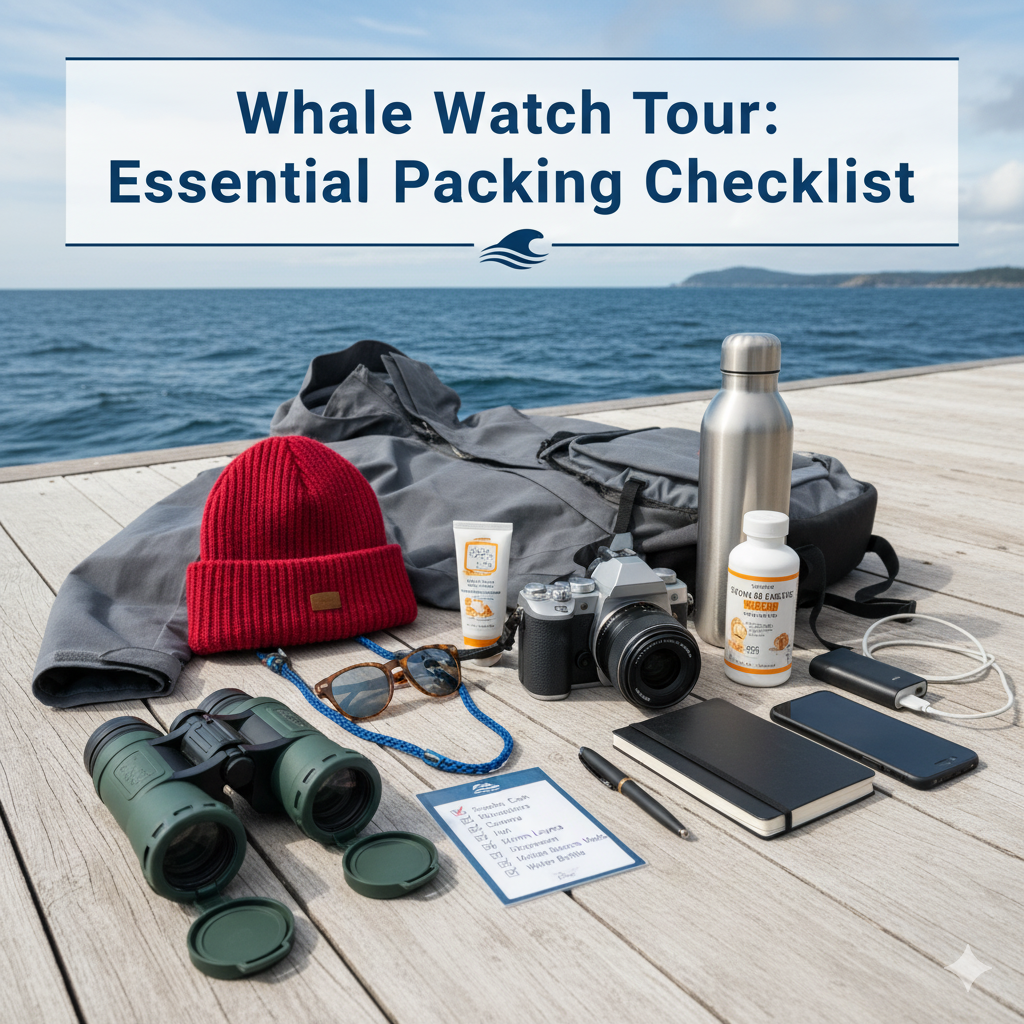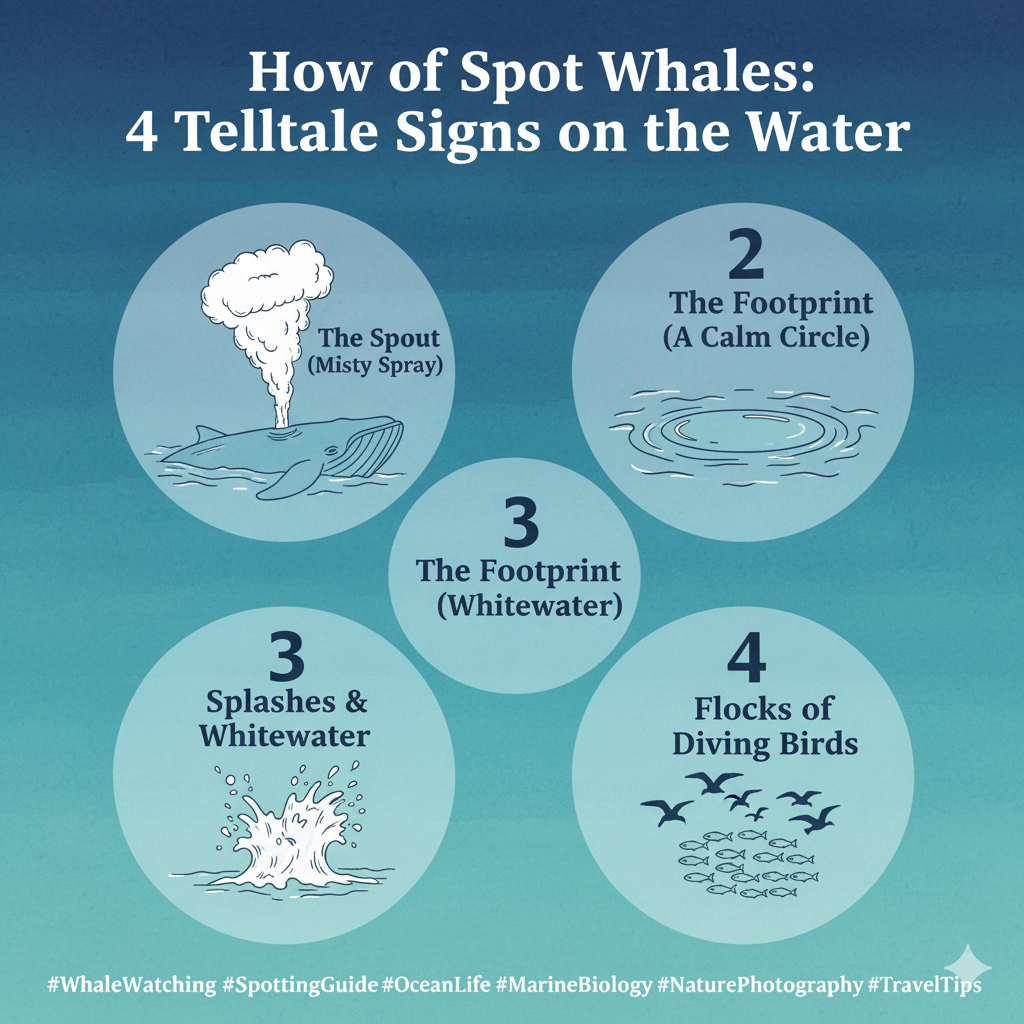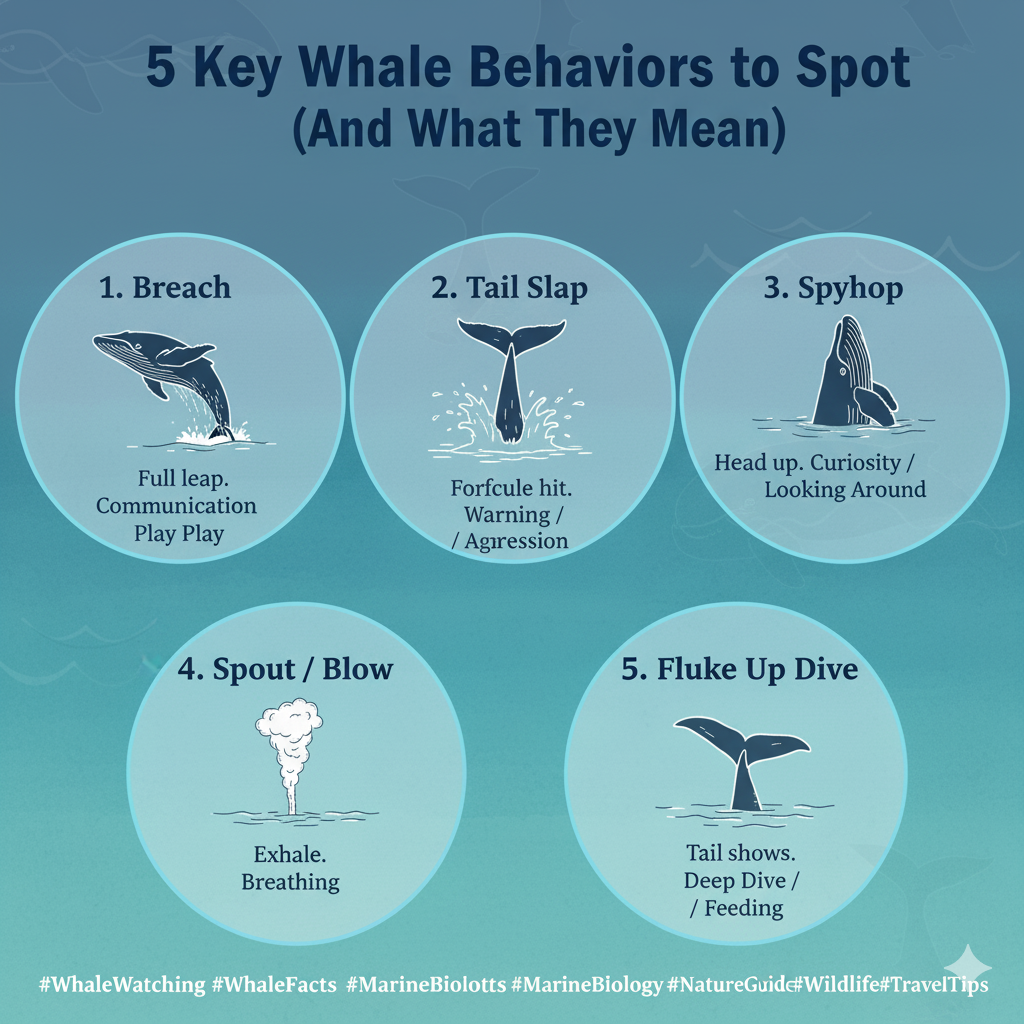There’s a moment that every marine biologist, every seasoned guide, and every fortunate spectator lives for. It’s the split second when the vast, enigmatic ocean surface breaks, and an impossible mass of life—a whale, a true titan of the deep—emerges. The sheer scale, the raw power, the ancient wisdom in their slow movements… it’s a heart-stopping, soul-stirring spectacle that etches itself into your memory forever. But to truly unlock the magic, to transform a distant glimpse into an immersive encounter, there’s one indispensable tool: a good pair of binoculars.
This isn’t just a trip; it’s an expedition. Whether you’re scanning the horizon from a bustling tour boat or patiently watching from a coastal cliff, your binoculars are your gateway to a secret world. They are the difference between hearing about a whale and truly seeing it – the intricate patterns on its fluke, the powerful spray of its breath, the curious gaze of a spyhopping head. Join me, an experienced guide, as we prepare you for an adventure of a lifetime, teaching you how to use your binoculars to spot more wildlife, understand their fascinating behaviors, and make your marine and whale watching with binoculars experience truly unforgettable.
The One Tool You Can’t Leave Behind: Why Binoculars are Essential
Imagine standing on the deck, the salty air invigorating your senses, and someone shouts, “Blow, twelve o’clock!” You squint, trying to make out the distant misty puff. Then, you raise your binoculars, and suddenly, that faint wisp transforms into the undeniable exhale of a majestic humpback. This is the power of good optics, and why they are the single most essential piece of gear you can bring.
- They Defeat Distance: The ocean is vast, and while our captains do their best to get us close, marine mammals are wild and roam freely. Binoculars bridge that gap, bringing distant actions and animals into stunning focus. A ripple on the horizon becomes a pod of playful dolphins; a dark smudge against the waves reveals a surfacing whale.
- They Reveal Detail: It’s one thing to see a whale; it’s another to witness the barnacles clinging to its skin, the unique serrations on its fluke, or the curious expression in its eye during a spyhop. These details elevate a sighting from a general observation to an intimate moment of connection.
- They Help You Spot the First Signs: Often, the first indication of a whale’s presence is subtle – a distant spout, a flash of white water, or a gathering of birds. Binoculars amplify these faint signals, allowing you to confirm a sighting long before it’s visible to the naked eye. This early detection means more time to observe and appreciate the animal.
Gearing Up: Choosing Binoculars for the Ocean
Selecting the right binoculars for a marine environment is crucial. It’s not about the most powerful magnification; it’s about stability, durability, and clarity.
- The Stability Secret: Why 7x or 8x Magnification is Better: While a higher magnification like 10x might seem appealing, remember you’ll be on a moving platform – a boat. Even slight pitching and rolling will be greatly exaggerated through higher-powered lenses, making it incredibly difficult to keep your target steady. A 7x or 8x magnification (like 7×50 or 8×42) provides a wider, more stable field of view, making it much easier to locate and track fast-moving animals from a rocking boat. The “50” in 7×50 refers to the objective lens diameter in millimeters, indicating good light gathering capabilities which are excellent for dawn, dusk, or overcast conditions.
- Key Features to Look For:
- Waterproofing and Fog-proofing: This is non-negotiable. Salt spray, rain, and rapid temperature changes are common at sea. Look for nitrogen or argon purged optics, sealed with O-rings, to prevent internal fogging and water damage.
- Rubber Armor: A robust rubber coating protects your binoculars from bumps and drops, and provides a much-needed non-slip grip, especially with wet hands.
- Eye Relief: If you wear glasses, good eye relief (15mm or more) allows you to see the full field of view without removing your spectacles.
- Image Stabilization: Some high-end marine binoculars offer image stabilization, which can compensate for boat movement. While fantastic, they come at a higher price point. For most users, good technique with a 7x or 8x pair is sufficient.
Whale Watch Tour: Essential Packing Checklist
Don’t let unexpected conditions dampen your spirits! Here’s a quick checklist of essentials for any marine wildlife excursion.

How to Spot Whales: The Telltale Signs on the Water
This is where your inner marine biologist comes alive! Learning what to look for on the water’s surface will dramatically increase your chances of spotting whales and other marine life. It’s about reading the subtle cues the ocean provides.
Look for the ‘Blow’: The Exhale of a Giant
The most iconic and often the first sign of a whale is its “blow” or “spout” – the misty exhalation of warm, moist air and sometimes mucus from its lungs as it surfaces to breathe. Using your binoculars, you can often discern differences in the blow that hint at the species:
- Humpbacks: Have a bushy, columnar blow, often 10-20 feet high.
- Gray Whales: Produce a distinctive heart-shaped or V-shaped blow, typically lower and broader.
- Sperm Whales: Have a low, forward-angled blow, unique among large whales.
Scan the horizon, especially downwind, for any disturbance that looks like a sudden puff of smoke or steam. This is often the initial confirmation of a whale’s presence.
Watch for Splashes and Whitewater
While a peaceful spout is common, sudden, energetic splashes and whitewater are unmistakable signs of active behavior. These can indicate a whale breaching, tail slapping, or even porpoising dolphins. When you see a distant commotion, quickly bring your binoculars to bear. It could be the precursor to a spectacular display!
Follow the Birds
This is one of my favorite whale watching tips for beginners. Seabirds are keen observers of the ocean’s bounty. A sudden congregation of diving birds – gulls, shearwaters, pelicans – often indicates that baitfish (like anchovies or herring) are being driven to the surface. And what drives baitfish to the surface? Larger predators! Whales, dolphins, and sea lions frequently feed on these schooling fish. If you see a swirling vortex of birds diving into the water, point your binoculars there; chances are there’s action below.
Find the ‘Footprint’
A whale’s “footprint” isn’t an actual print, but rather a calm, circular, often glassy patch of water left on the surface after a whale has submerged or changed direction just below the surface. The immense body of the whale displaces water, creating a temporary slick or disturbance that smooths the chop. With binoculars, you can spot these subtle patches, often leading you to where the whale will next surface. It’s a fleeting but reliable clue.
How to Spot Whales: 4 Telltale Signs on the Water
Here are the key visual cues to watch for, making you an expert spotter in no time!

Decoding What You See: A Guide to Common Whale Behaviors

Spotting a whale is exhilarating, but understanding common whale behaviors adds another layer of appreciation. Your binoculars will help you witness these actions up close and interpret what the whales might be doing.
The Breach: The Spectacular Full-Body Leap
Perhaps the most awe-inspiring of all whale behaviors, a breach is when a whale propels itself almost entirely out of the water, often twisting in mid-air, before falling back with a colossal splash. While the exact reasons aren’t fully understood, breaches are thought to be for communication, removing parasites, or simply play. With your binoculars, you might catch the momentary suspension in the air, the arch of their massive back, or the graceful reentry.
The Tail Slap or Lobtailing: Communication or Aggression
Tail slapping (or lobtailing) involves a whale lifting its massive tail high out of the water and bringing it down with tremendous force, creating a thunderous slap on the surface. This behavior is often associated with communication within a pod, warning off predators, or possibly signaling annoyance. It’s loud, powerful, and a truly impressive sight through your lenses.
Spyhopping: The Curious Gaze
When a whale “spyhops,” it lifts its head vertically out of the water, often rotating slowly, as if to get a look at its surroundings above the surface. While whales have excellent underwater hearing, their eyesight above water is debated. Some believe they do it to observe their environment, perhaps looking at boats or other whales. It’s a truly humbling experience to catch a whale’s eye during a spyhop through your binoculars.
The Fluke Up Dive: The Classic Postcard Shot
Often seen with humpback and blue whales, the fluke up dive is when the whale lifts its tail (fluke) high out of the water as it begins a deep dive for feeding. The underside of many whale flukes has unique markings, nicks, and scars that are like fingerprints, used by researchers for individual identification. This is the moment photographers dream of, and with your binoculars, you’ll get a clear, close-up view of this majestic farewell as the whale descends into the depths.
Pro Tips for an Unforgettable Trip
Now that you’re geared up and know what to look for, here are some insider tips to maximize your marine wildlife experience, especially when using binoculars on a boat.
- How to Scan Systematically: Don’t just wildly swing your binoculars around. This is a common mistake that leads to frustration and seasickness. Instead, use the “sweep and search” method. With your binoculars down, scan a section of the horizon with your naked eye, looking for any of the telltale signs. Once you spot something, or if you’re just systematically searching, bring your binoculars to your eyes and scan that specific section from left to right, or right to left, slowly and deliberately. When you reach the end of that section, drop your binoculars, pick a new section with your naked eye, and repeat. This helps maintain your horizon line and prevents disorientation.
- Listen to Your Guide: Your whale watching guide is an expert. They spend countless hours on the water, know the local patterns, and are skilled at spotting and interpreting marine life behavior. They’ll often point out subtle cues you might miss. Pay attention to their directions; they’re working hard to give you the best experience.
- Look Beyond Whales: Marine Wildlife Identification: While whales are the main attraction, the ocean is teeming with other incredible creatures. Keep an eye out for playful dolphins riding the bow wave, curious porpoises, sunbathing seals and sea lions on buoys or rocks, and a myriad of fascinating seabirds. Your binoculars are excellent for getting a closer look at these other amazing species. Each sighting adds to the richness of your marine adventure.
- Be a Responsible Observer: We are guests in these animals’ homes. Always follow the guidelines provided by your tour operator. This includes maintaining respectful distances, keeping noise levels down, and never attempting to feed or interact with the wildlife. Our goal is to observe and appreciate, ensuring these magnificent creatures can continue to thrive undisturbed for generations to come.
Conclusion
The magic of the ocean, with its boundless depths and the incredible creatures that call it home, awaits you. By preparing with the right gear, understanding the subtle clues the water offers, and recognizing the fascinating behaviors of marine life, you’re not just going on a trip; you’re embarking on an immersive journey of discovery. Your binoculars will be your most trusted companion, transforming fleeting glimpses into detailed observations and deepening your connection with the wild heart of the ocean.
So, grab your binoculars, layer up, and get ready. The thrill of spotting a distant spout, the wonder of a breaching whale, the quiet majesty of a fluke disappearing into the blue – these are the moments that truly make A Guide to Marine & Whale Watching with Binoculars an essential part of your adventure. Get out on the water, look to the horizon, and let the ocean amaze you!
